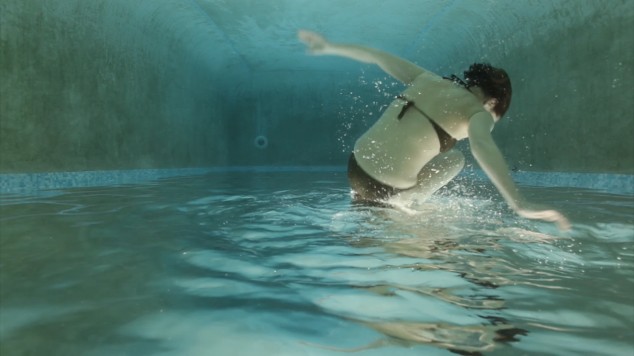
Viewed through the baking darkness of a shipping container on a South coast beach, Critchley’s sub aquatic film floods the space with a certain amniotic calm.
What you see is a cross section of a small indoor pool. With the ease of a water baby, a bikini clad free diver spins and flips back and forth with no apparent need to breathe.
Meanwhile another respiratory athlete, this time a soprano singer, provides a soaring and swooping soundtrack. Having removed all consonants, it would read like the cry of a newborn.
Breath is the key to this film. No matter how long its subjects hold that for, they both need to come up for air. But it surely wasn’t ever this way in the womb.
Critchley cannot really take us back to our intrauterine beginnings, but she can offer the next best thing. She inverts the picture so the diver appears to be flying.
This sets up a parallel between the need to draw breath and the law of gravity. Both requirements are hard to get away from, as inevitable as the “breathe, breathe, breathe” rule of labour itself.
We may be reminded that in its prehistoric beginnings, art was made in dark places. In chambers rich with carbon dioxide, suffocating cave artists are thought to have experienced visions.
At the same time, of course, artworks of great beauty can leave the viewer breathless. In a case of Stendhal Syndrome you might succumb to gravity and collapse.
Critchley’s film peaks with the sudden appearance of her diver in the near ground. She is tucked into a foetal ball and spins just above the waterline. It makes you gasp.
This is the moment she is almost, but not quite born. She reappears in the background and we can breathe again. For just a while longer we can maintain this state of pre-natal oneness with art.
Aria can be seen in Brighton as part of HOUSE Festival 2013. See housefestival.org for more details.